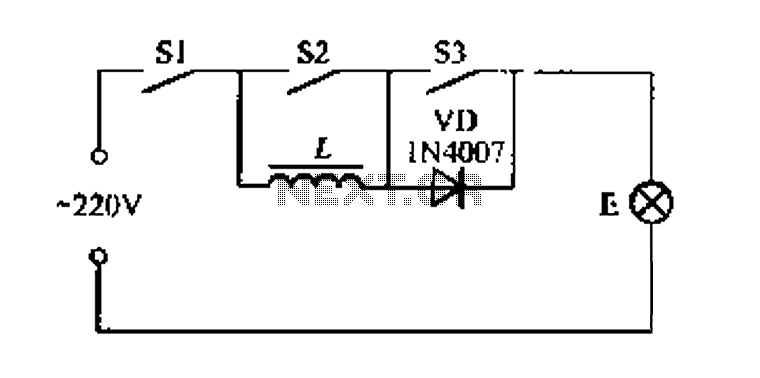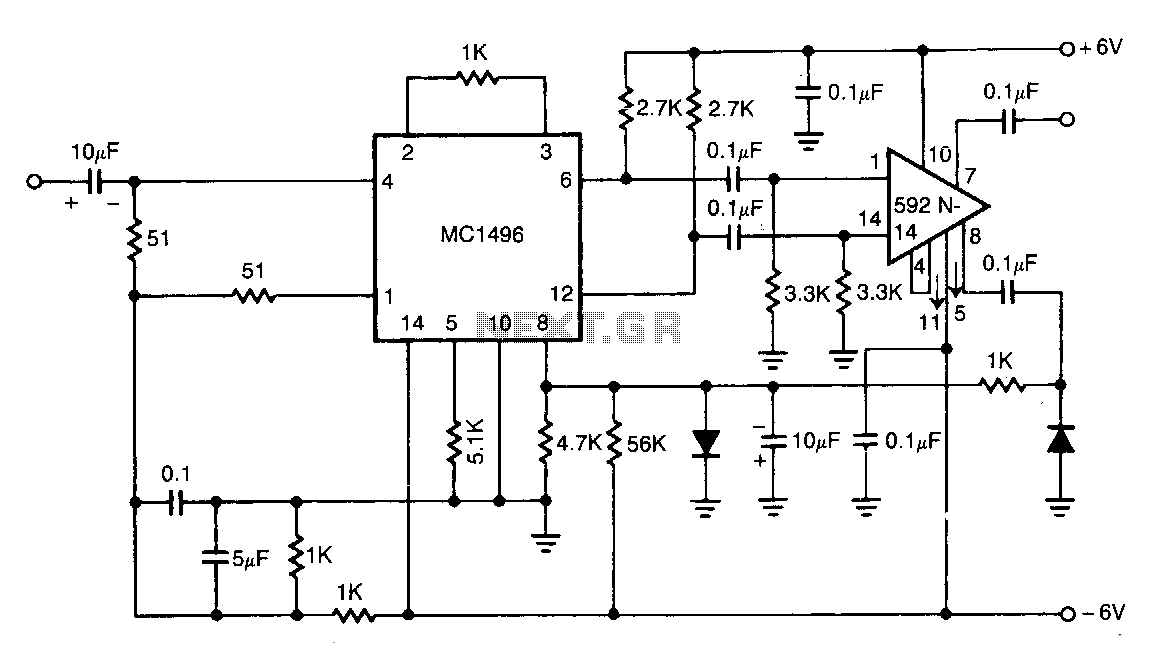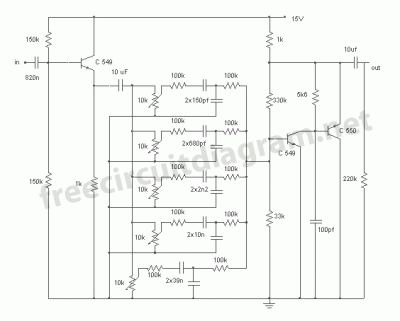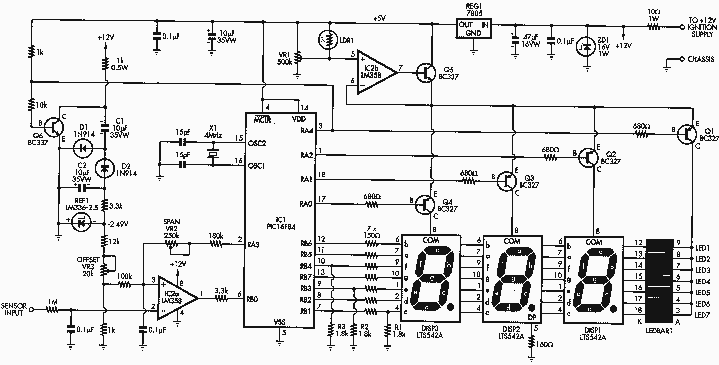
The Simple AM Broadcast Band

This is a crystal radio circuit that features a simple design but is ineffective in tuning to the medium wave AM broadcast band. Component: Antenna.
The crystal radio circuit operates on the principle of radio wave detection using a crystal detector, typically made from a semiconductor material. The simplicity of the design allows for easy assembly and minimal component requirements, making it an excellent project for beginners in electronics.
The primary components of a crystal radio include an antenna, which captures radio signals, a tuning circuit that selects the desired frequency, a detector that demodulates the signal, and a speaker or earphone for audio output. In this specific design, the antenna is crucial as it collects electromagnetic waves from the air, which are then fed into the tuning circuit.
The tuning circuit usually consists of an inductor and a capacitor, forming a resonant circuit that can be adjusted to select different frequencies. However, in this case, the circuit's design has limitations that hinder its ability to effectively tune into the medium wave AM broadcast band. This could be due to insufficient inductance or capacitance values, or possibly the placement and length of the antenna not being optimized for the desired frequency range.
The crystal detector, often a point-contact diode, rectifies the radio signal, allowing audio frequencies to be extracted. The output is then sent to a high-impedance earphone or speaker, which converts the audio signal into sound. Although the circuit is simple and inexpensive to build, the lack of effective tuning capabilities means that it may not perform well in receiving clear audio from AM stations, particularly in crowded frequency environments.
Overall, while this crystal radio circuit serves as a valuable educational tool to understand the basics of radio wave reception and signal processing, enhancements in component selection and circuit design would be necessary to improve its performance in tuning to the medium wave AM broadcast band.is a crystal radio circuit that is simple in design but ineffective in tuning to the medium wave AM broadcast band. Component: Antenna, .. 🔗 External reference
The crystal radio circuit operates on the principle of radio wave detection using a crystal detector, typically made from a semiconductor material. The simplicity of the design allows for easy assembly and minimal component requirements, making it an excellent project for beginners in electronics.
The primary components of a crystal radio include an antenna, which captures radio signals, a tuning circuit that selects the desired frequency, a detector that demodulates the signal, and a speaker or earphone for audio output. In this specific design, the antenna is crucial as it collects electromagnetic waves from the air, which are then fed into the tuning circuit.
The tuning circuit usually consists of an inductor and a capacitor, forming a resonant circuit that can be adjusted to select different frequencies. However, in this case, the circuit's design has limitations that hinder its ability to effectively tune into the medium wave AM broadcast band. This could be due to insufficient inductance or capacitance values, or possibly the placement and length of the antenna not being optimized for the desired frequency range.
The crystal detector, often a point-contact diode, rectifies the radio signal, allowing audio frequencies to be extracted. The output is then sent to a high-impedance earphone or speaker, which converts the audio signal into sound. Although the circuit is simple and inexpensive to build, the lack of effective tuning capabilities means that it may not perform well in receiving clear audio from AM stations, particularly in crowded frequency environments.
Overall, while this crystal radio circuit serves as a valuable educational tool to understand the basics of radio wave reception and signal processing, enhancements in component selection and circuit design would be necessary to improve its performance in tuning to the medium wave AM broadcast band.is a crystal radio circuit that is simple in design but ineffective in tuning to the medium wave AM broadcast band. Component: Antenna, .. 🔗 External reference





